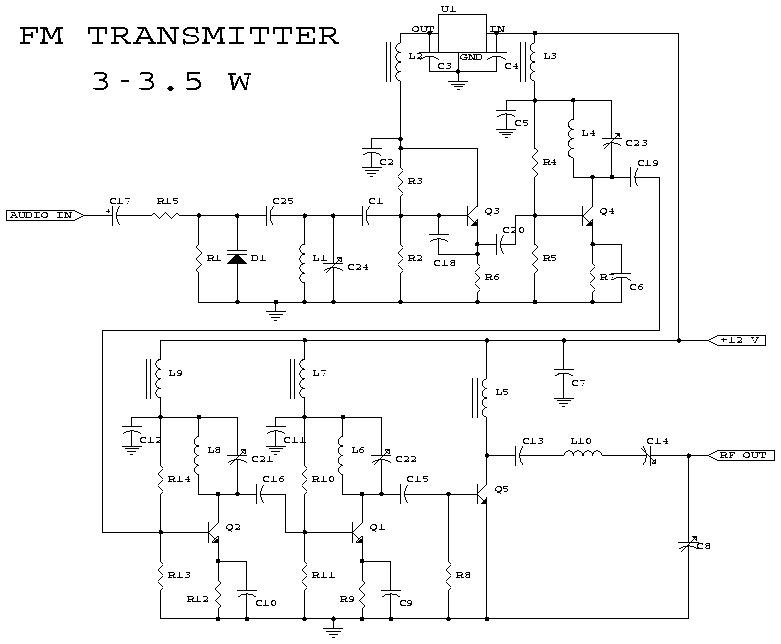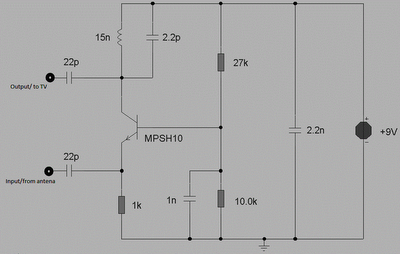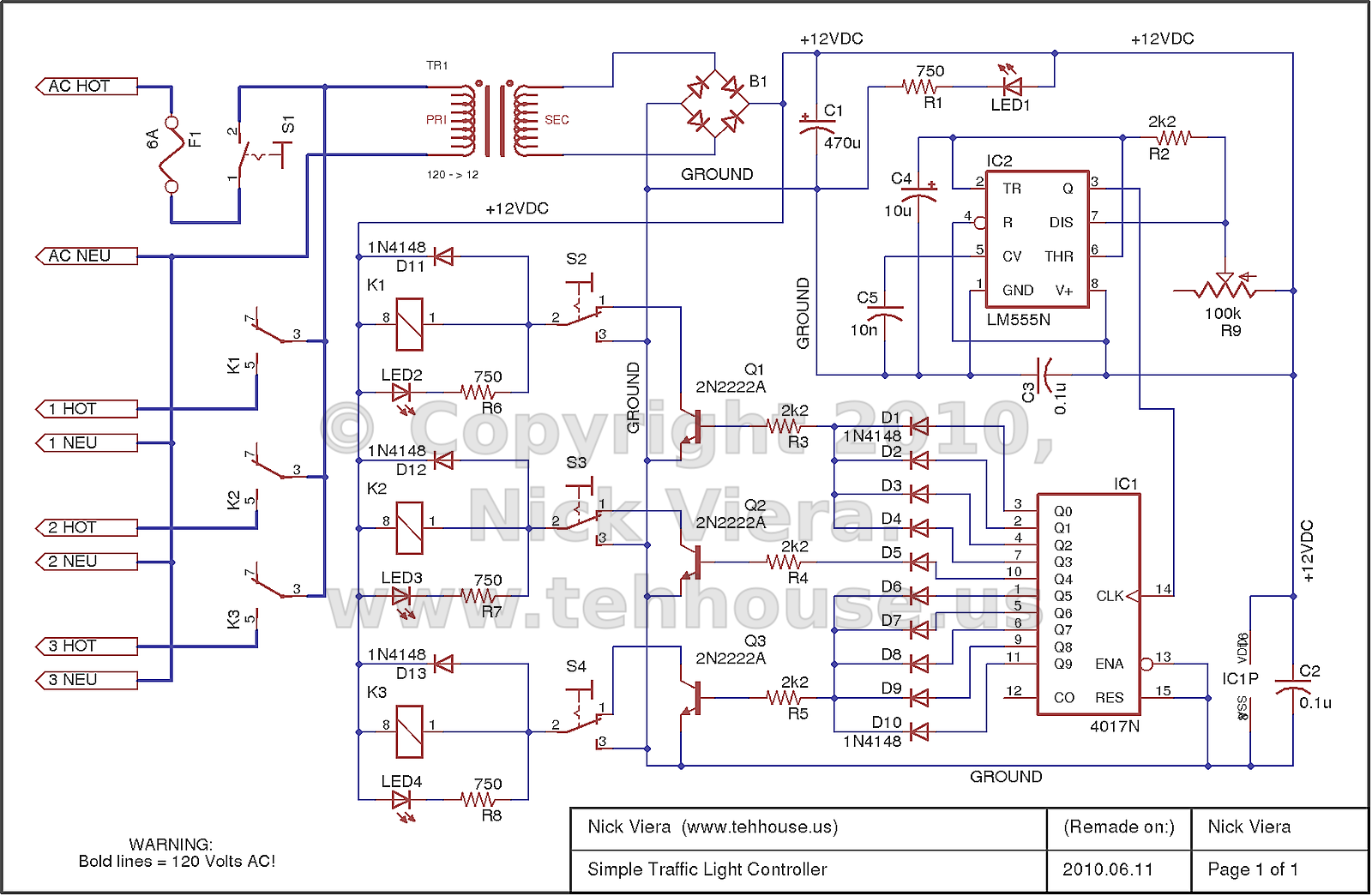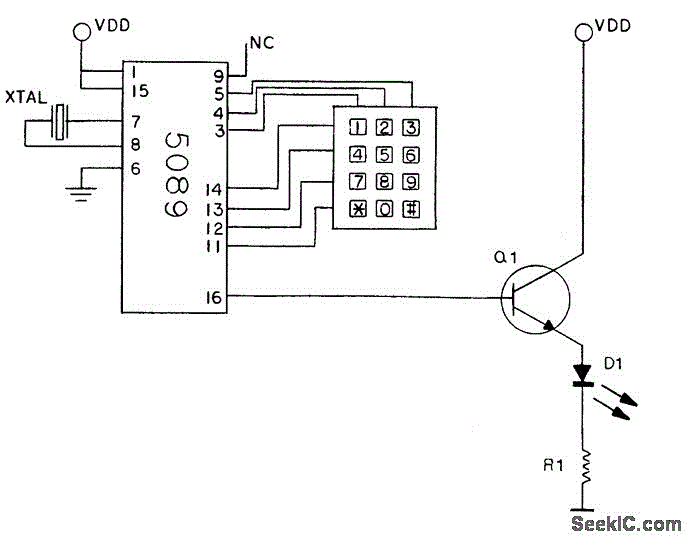
simple steps for making fm transmitter
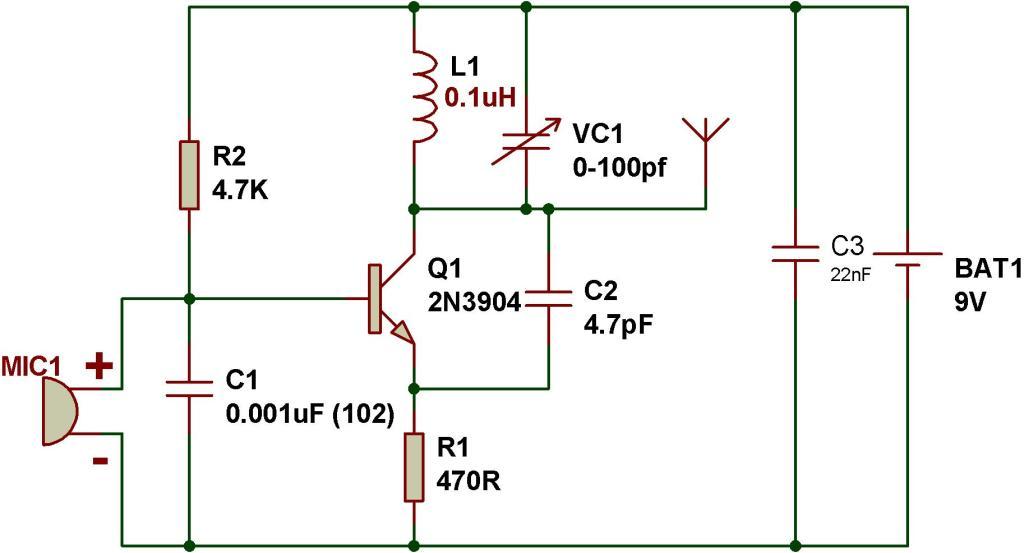
This tutorial outlines the construction of a simple FM transmitter utilizing a single transistor. The project requires minimal components, making it suitable for beginners. Before proceeding, refer to the schematic provided below, which details the components necessary for building the FM transmitter. The transmission range of this circuit is approximately 10 to 20 meters. A variable capacitor, referred to as VC1, also known as a trimmer capacitor, is required. It is available for purchase at local stores, with a capacitance range recommended between 0-100pF or 10-100pF. If a trimmer capacitor is unavailable, a minimum capacitance of 20pF is advised. A capacitor can also be salvaged from a broken radio, though assistance may be needed for extraction. On the electret microphone, one of the pins is soldered to the microphone case, which indicates that this pin is the negative terminal. It is noteworthy that a fixed 20pF capacitor has been used in the schematic instead of a trimmer capacitor. In the absence of a variable capacitor, a fixed capacitor can be utilized. For optimal reception, adjust the capacitor using a non-conductive tool until the receiver captures sound from the transmitter's microphone. The frequency can be determined using a specific formula.
The FM transmitter circuit primarily consists of a single transistor, which serves as the amplifier and modulator. The transistor is typically an NPN type, such as the 2N3904 or BC547, which is capable of operating at the desired frequency range. The circuit also includes a power supply, usually a battery, which provides the necessary voltage and current for the operation of the transistor and other components.
The electret microphone acts as the audio input source, converting sound waves into electrical signals. The microphone's output is fed into the base of the transistor, where it is amplified. The variable capacitor, or trimmer capacitor, plays a crucial role in determining the transmitter's frequency. By adjusting this capacitor, the resonant frequency of the circuit can be modified, allowing for fine-tuning of the output frequency to avoid interference with other radio signals.
The circuit is completed with additional passive components, including resistors and capacitors, which help stabilize the transistor's operation and filter the audio signal. The transmission antenna can be as simple as a short wire, enhancing the circuit's ability to transmit signals over the specified range.
In summary, this FM transmitter project is an excellent introduction to radio frequency electronics, demonstrating fundamental principles of modulation and amplification. The simplicity of the design, along with the use of readily available components, makes it an ideal project for those new to electronics. Proper assembly and tuning of the circuit will yield a functional FM transmitter capable of broadcasting audio signals within the specified range.This tutorial is for making simplest FM transmitter using one transistor. You can make this project with less components and it is an easy and simple project for beginners. Before you proceed, please see the schematic given below. In the schematic, you will see the components required for making an FM transmitter. The transmission range of this cir cuit is approximately 10-20 meters. 3. Variable capacitor: VC1. It is also called trimmer capacitor. You can buy one from your local store. The capacitance range should be 0-100pF or 10-100pF. If you cannot get one, try to get a trimmer capacitor that has minimum capacitance of 20pF. You can also get such capacitor from your broken radio, but you may need assistance in getting that out from your radio. On your electret microphone, you will see that on one of the pins, there is solder pad connected to the case of microphone.
Remember that pin is always negative. On the image shown below, you can notice that I have not used a trimmer/variable capacitor. I have used a fixed 20pF capacitor instead. So, if you don`t have a variable capacitor, you can use a fixed capacitor also. Then, with a non-conductive tool, adjust the capacitor for the clearest reception, rotate it till the receiver receives a sound from the microphone of transmitter. Use the following formula for determining the frequency. 🔗 External reference
The FM transmitter circuit primarily consists of a single transistor, which serves as the amplifier and modulator. The transistor is typically an NPN type, such as the 2N3904 or BC547, which is capable of operating at the desired frequency range. The circuit also includes a power supply, usually a battery, which provides the necessary voltage and current for the operation of the transistor and other components.
The electret microphone acts as the audio input source, converting sound waves into electrical signals. The microphone's output is fed into the base of the transistor, where it is amplified. The variable capacitor, or trimmer capacitor, plays a crucial role in determining the transmitter's frequency. By adjusting this capacitor, the resonant frequency of the circuit can be modified, allowing for fine-tuning of the output frequency to avoid interference with other radio signals.
The circuit is completed with additional passive components, including resistors and capacitors, which help stabilize the transistor's operation and filter the audio signal. The transmission antenna can be as simple as a short wire, enhancing the circuit's ability to transmit signals over the specified range.
In summary, this FM transmitter project is an excellent introduction to radio frequency electronics, demonstrating fundamental principles of modulation and amplification. The simplicity of the design, along with the use of readily available components, makes it an ideal project for those new to electronics. Proper assembly and tuning of the circuit will yield a functional FM transmitter capable of broadcasting audio signals within the specified range.This tutorial is for making simplest FM transmitter using one transistor. You can make this project with less components and it is an easy and simple project for beginners. Before you proceed, please see the schematic given below. In the schematic, you will see the components required for making an FM transmitter. The transmission range of this cir cuit is approximately 10-20 meters. 3. Variable capacitor: VC1. It is also called trimmer capacitor. You can buy one from your local store. The capacitance range should be 0-100pF or 10-100pF. If you cannot get one, try to get a trimmer capacitor that has minimum capacitance of 20pF. You can also get such capacitor from your broken radio, but you may need assistance in getting that out from your radio. On your electret microphone, you will see that on one of the pins, there is solder pad connected to the case of microphone.
Remember that pin is always negative. On the image shown below, you can notice that I have not used a trimmer/variable capacitor. I have used a fixed 20pF capacitor instead. So, if you don`t have a variable capacitor, you can use a fixed capacitor also. Then, with a non-conductive tool, adjust the capacitor for the clearest reception, rotate it till the receiver receives a sound from the microphone of transmitter. Use the following formula for determining the frequency. 🔗 External reference
